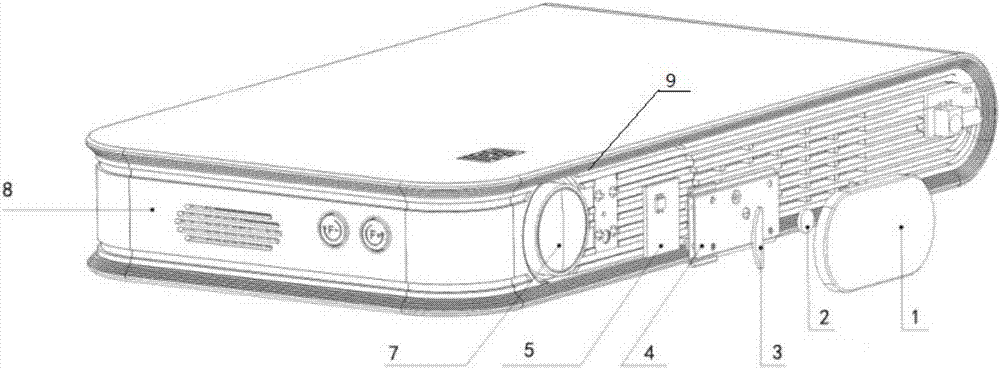Control device
A control device and protective cover technology, applied in the direction of electrical program control, sequence/logic controller program control, etc., can solve problems such as poor experience, loss of dust cover, complex structure, etc., to reduce costs and improve The effect of user experience
- Summary
- Abstract
- Description
- Claims
- Application Information
AI Technical Summary
Problems solved by technology
Method used
Image
Examples
Embodiment Construction
[0019] The technical solutions of the present invention will be described in further detail below with reference to the accompanying drawings and embodiments.
[0020] figure 1 It is an exploded view of the control device of the present invention, as shown in the figure, the control device includes:
[0021] Case 8, sliding piece 4, magnetic steel 2, protective cover 1 and Hall switch board 5.
[0022] The casing 8 has a slide rail 9 and a through hole, and the optical head of the optical machine accommodated in the casing 8 penetrates through the through hole;
[0023] Specifically, the casing 8 is the carrier of other components, such as the casing 8 carrying the slide rail 9 and the through hole, and the position of the through hole is consistent with the optical head of the optical machine arranged in the casing 8. Corresponding to the position of the optical machine head, the light beam emitted by the optical machine head is transmitted through the through hole.
[002...
PUM
 Login to View More
Login to View More Abstract
Description
Claims
Application Information
 Login to View More
Login to View More - R&D
- Intellectual Property
- Life Sciences
- Materials
- Tech Scout
- Unparalleled Data Quality
- Higher Quality Content
- 60% Fewer Hallucinations
Browse by: Latest US Patents, China's latest patents, Technical Efficacy Thesaurus, Application Domain, Technology Topic, Popular Technical Reports.
© 2025 PatSnap. All rights reserved.Legal|Privacy policy|Modern Slavery Act Transparency Statement|Sitemap|About US| Contact US: help@patsnap.com



